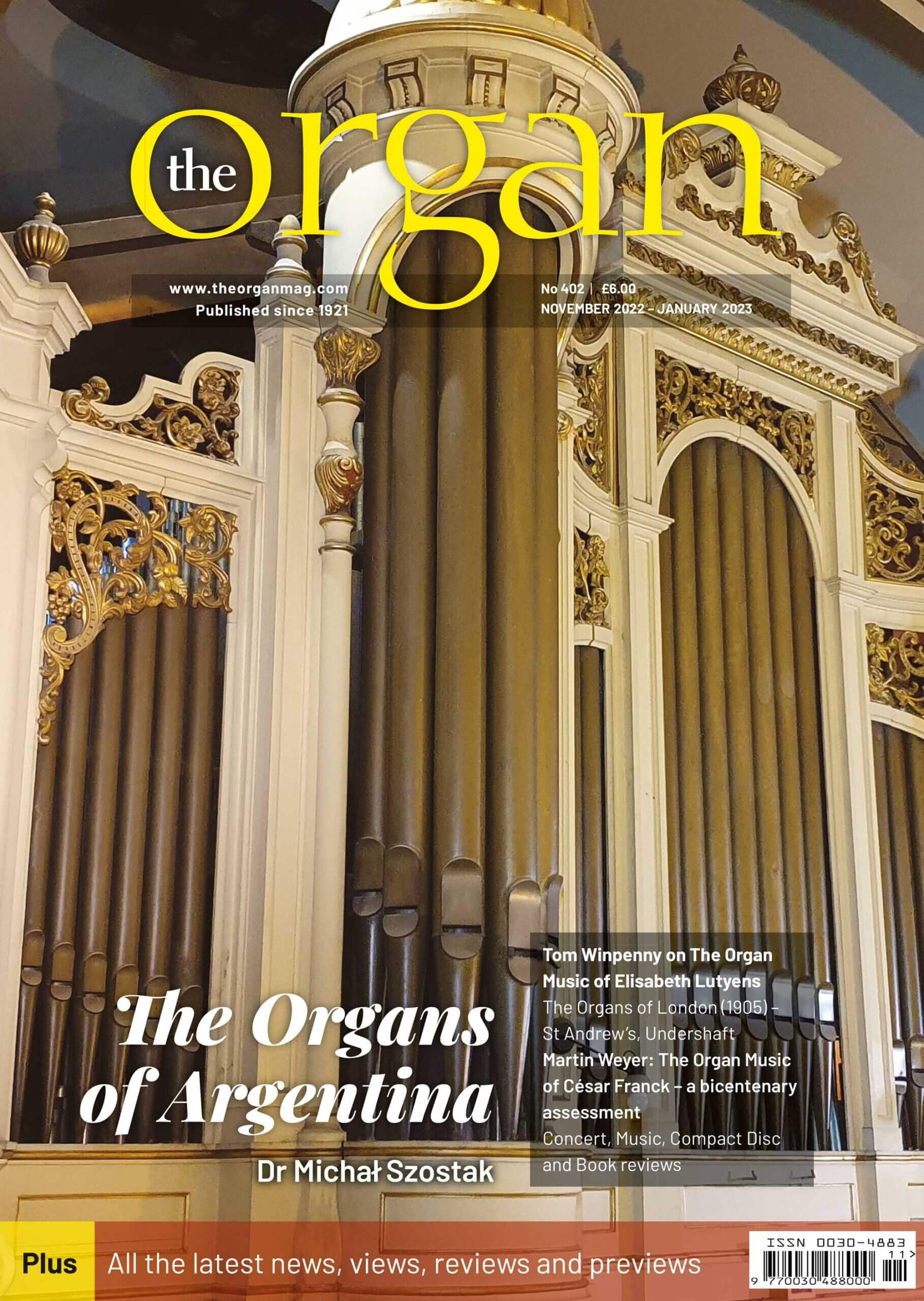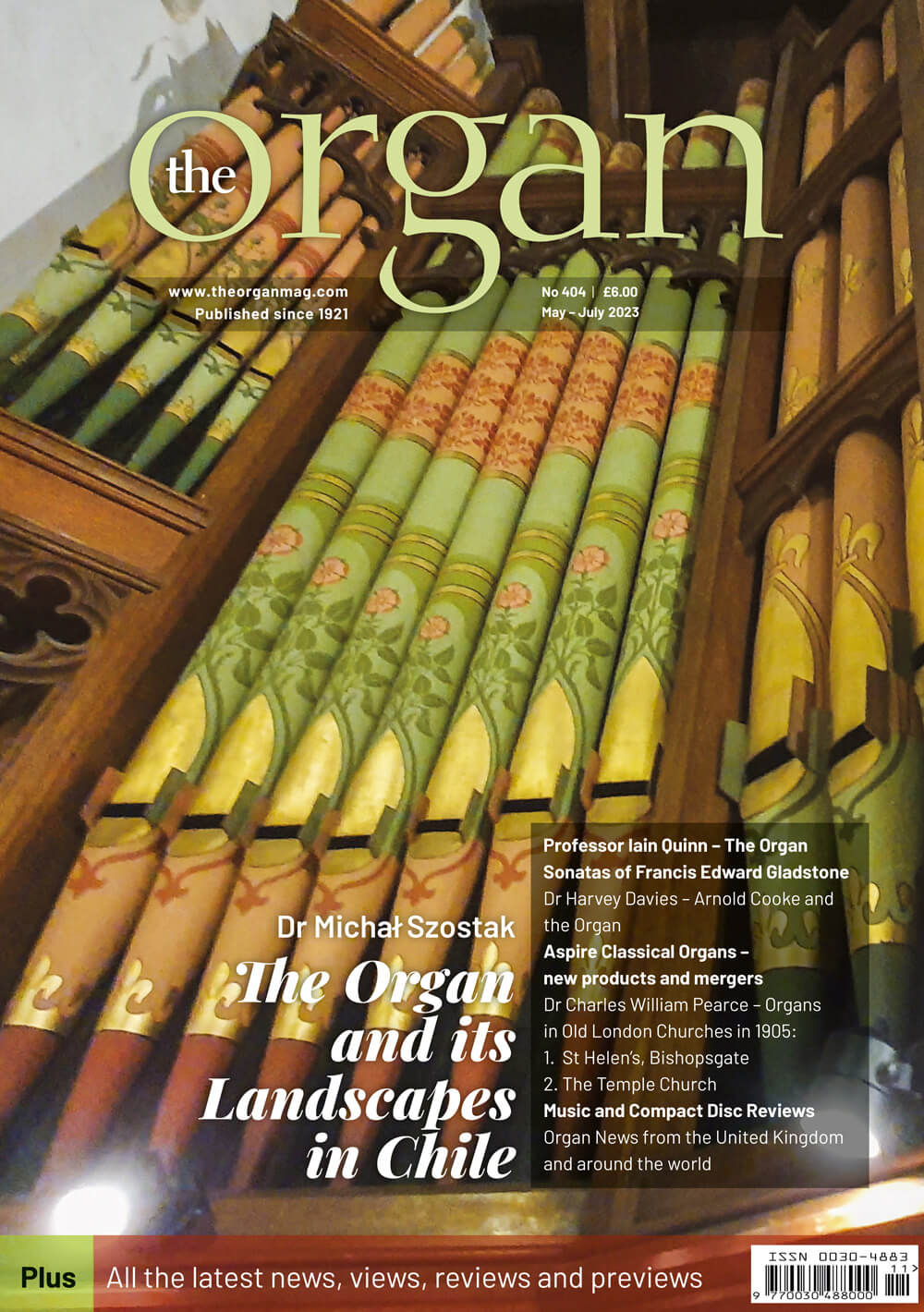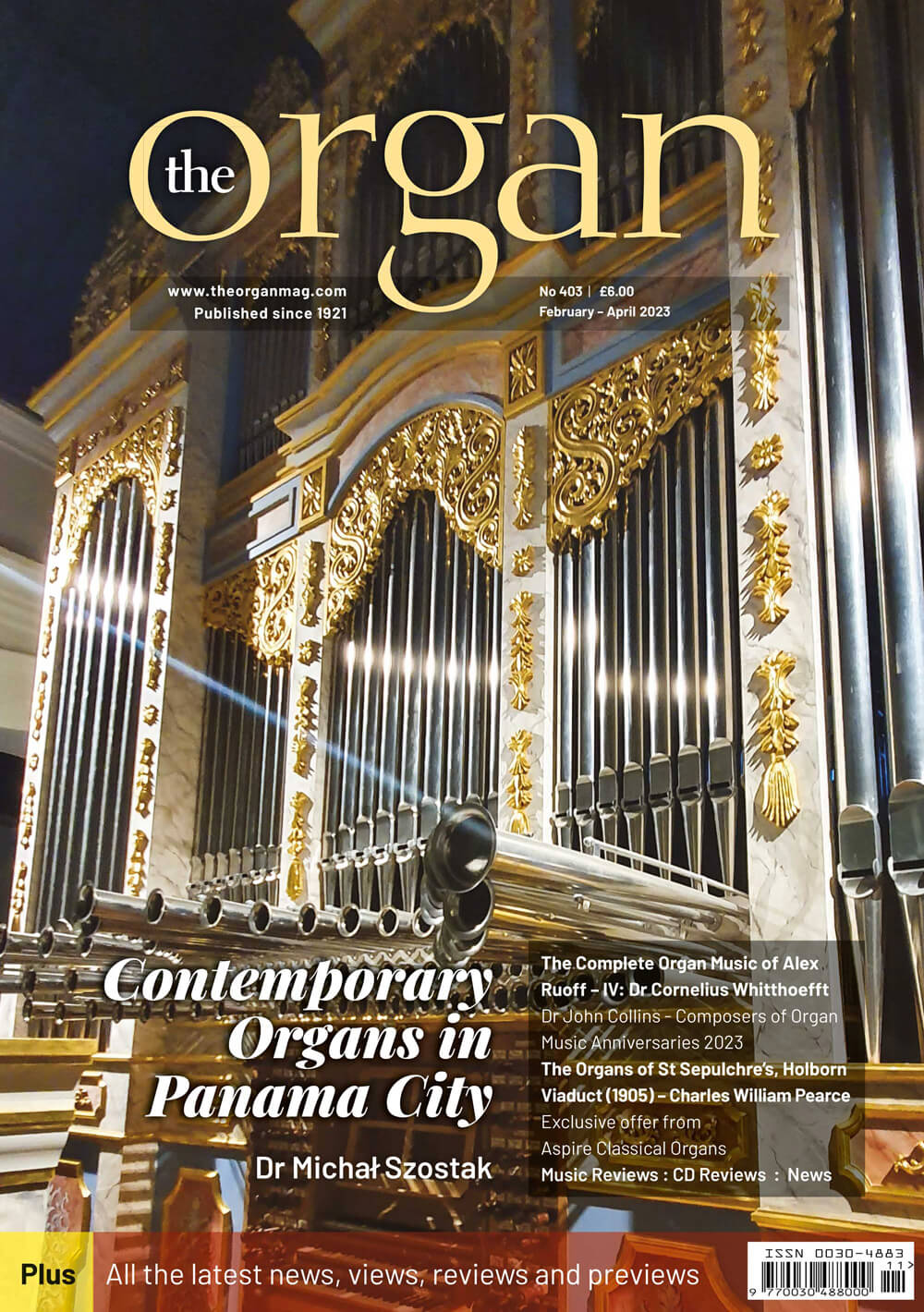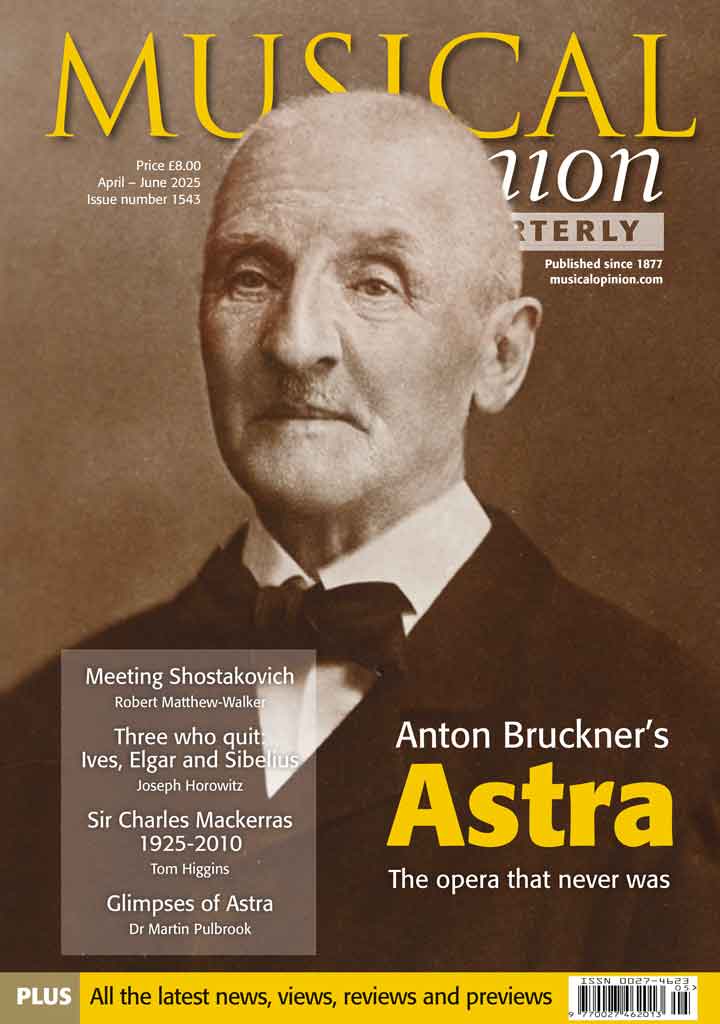

Current Issue
Reviews
Munich Bavarian State Opera – Donizetti: The Daughter of the Regiment
The last new production of Donizetti‘s opéra-comique La Fille du régiment at the Bavarian State Opera was in German (as Die Regimentstochter) and dates from September of 1935. The nearly 90-year gap is at least partly due to a general rejection in Germany of anything...
Guest Editorial
Britten: Death in Venice
Marx in London!
Scottish Opera Glasgow – Jonathan Dove: Marx in London! This opera was first heard at the Stadttheater Bonn in 2018 in a staging by Jürgen R. Weber in commemoration of Marx’s 200th anniversary. Weber’s production is a satirical account of one day from Marx’s life in...
Berlin Staatsoper unter den Linden – Wagner: Tannhäuser
What happens when an opera house asks a ballet dancer and choreographer with her own dance company to produce an opera? There is a lot of ballet where normally there is not, and there is hardly any Personenregie. Tannhäuser has a place for ballet, normally given to...
The Ring Cycle in Sofia, Bulgaria
Parsifal Parsifal was the sixth Wagner opera to be produced at the Sofia Opera by Plamen Kartaloff in his mission to develop a Wagnerian tradition in Bulgaria. First staged in 2015, the preparation for the opera was assisted by Richard Trimborn. Kartaloff believes...
ENO – Rhinegold
Wotan may be a god, but he never strikes me as the brightest button in the box. His decision to give away Freia as payment to the giants for Valhalla, his castle in the sky, has clearly not been thought through. So too is the Arts Council’s decision to uproot English...
Bari – Teatro Petruzzelli: La Traviata
Is it possible the there is one Musical Opinion reader who has never seen La Traviata? And maybe is it also possible this reader has not formed an opinion about the central character before even seeing the opera? And maybe this reader also has a great degree of...
Opera North: Rigoletto
If you stroll around the ever-expanding Salford Quays complex these days, you will see a very different Media City to the one when the Lowry Theatre first opened more than 20 years ago. BBC and ITV studios, hotels, bars, restaurants, apartment blocks, trams and an...
New Recital Series at Leighton House from Lisa Peacock Concert Management
Lisa Peacock Concert Management Ltd announces the greatly anticipated appearance in London of Juan Pérez Floristán, Gold Medallist of the Arthur Rubinstein International Piano Master Competition 2021 in music by Chopin, Liszt, Wagner/Liszt and Beethoven on Saturday...
Explore By Topic
Handel: Jephtha: Royal Opera House, London
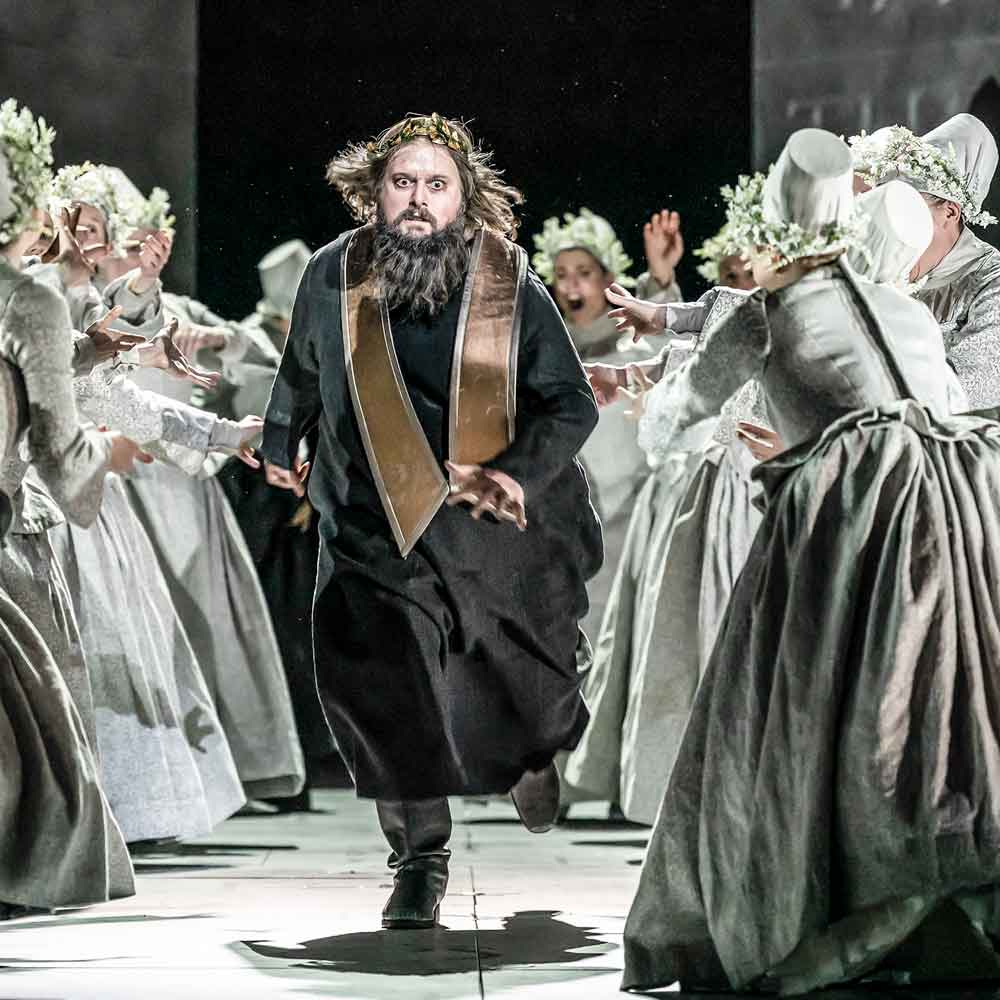
‘That whatsoever cometh forth of the doors of my house to meet me, when I return in peace from the children of Ammon, shall surely be the Lord’s, and I will offer it up for a burnt offering.’ Such is the vow of Jephtha, the eponymous hero of Handel’s final Oratorio. Taken from the Old Testament Book of Judges, it tells Jephtha’s story; he is an exiled warrior who returns to lead Israel in battle against the Ammonites. Jephtha makes the vow and is triumphant in battle. To his great distress, it is his daughter, Iphis, who comes forth from his house. Fortunately, an angel intervenes and saves her from sacrifice. Nonetheless, she is destined to live the rest of her life as a virgin dedicated to God.
Nameless in the Bible, she was fleshed out by Handel’s librettist Thomas Morell, who also gave her a young lover, Hamor, and a feisty mother, Storgè. Jephtha was first performed at the Covent Garden Theatre in 1752, and it was revived after some 270 years in a staged production directed by Oliver Mears. Although a rather grim tale of oppression, war, and human sacrifice, it is packed with wonderful melodies. Baroque fans can play spot the tune as it is full of phrases from Handel’s other works and even from other composers such as Purcell and Galuppi. The score’s pathos and despair reflect Handel’s struggles with his failing eyesight.
Giant moving grey tablets, inscribed with the fatal oath, framed every scene. This made much of the action difficult to see with Ilona Karas’s grey costumes set against the backdrop of Simon Lima’s grey set. Do opera directors ever look at their work from a distance? This production would have been greatly improved by a contrasting colour scheme. There was a strong echo of the Salem witch trials as the Israelites were dressed as 17th Century Puritans, and a stake was erected for Iphis in the final scene. The Israelites spent most of their time praying, sometimes in hysterical fervour, until Jephtha whipped the men up to fight. The Ammonites were a flash of colour in a scene of Hogarthian decadence. They danced and fiddled as the austere Israelites set their frivolous possessions ablaze, with violins, paintings, and chandeliers reduced to ashes. The Ammonite’s 18th Century costumes were excellent, but their wearers were galloping around in a 19th Century polka. Plenty of original resources for 17th/18th Century dance exist and a gigue can be just as wild as any polka. Movement director Anna Morrissey’s dance for Iphis and the virgins in Welcome as the Cheerful Light had a nice period feel. Fabiana Piccioli’s shadow puppet show effect heightened this mood. Why, oh why, was Jephtha dressed in a nightcap and gown straight out of Gilbert and Sullivan’s nightmare scene as he offered up his vow? This costume weakened Jephtha’s portrayal as a religious zealot. Hamor’s return from battle, bloodied and traumatised, gave a shocking jolt of realism. But this production had some baffling elements: the ladies who dressed Iphis as a nun seemed to chastise her, and Jephtha was cast out of society at the end. I did enjoy Iphis and Hamor ignoring her vow and running off together.
The soloists and chorus were often allowed stillness; this, coupled with the set, which acted as an excellent soundboard, enabled some nuanced singing. Alan Clayton was an expressive and powerful Jephtha. We heard the plaintive sound of a broken man in, ‘Hide thou oh hated beams,’ and his, ‘Waft her, angels,’ was achingly beautiful. His ‘Open thy marble Jaws’, was if anything too beautiful, and could have done with a bit more edge, from both singer and orchestra. He was well matched by Alice Coote as his wife Storge. Her nightmare scene, ‘scenes of horror, scenes of woe,’ was also a bit too beautiful, but her ‘first perish thou,’ was gutsy and edgy as she snarled with fury. Jennifer France, as Iphis, delivered all her coloratura with ease, and she gave us some gorgeous phrasing, particularly in ‘The soft melodious lute.’ Her bright soprano didn’t quite blend with counter-tenor Cameron Shahbazi as Hamor’s more mellow tones in their duet, ‘These labours past.’ However, this was still effective due to some highly convincing flirting! Shahbazi also gave us a stunning pianissimo da capo in ‘Happy They.’ I do like a bass singing Handel, and they don’t come any better than Brindley Sherratt’s Zebul; it’s a shame that his Act 2 aria was cut. Stand-out choral moments were the vocal blend in, ‘How Dark Oh Lord,’ and the exciting fugal choruses. The final chorus was sung from the stalls in glorious surround sound as ripped-up vows floated down on the audience like confetti, absolutely joyous.
The orchestra, replete with theorboes, was conducted from the harpsichord in true Handelian style by Baroque specialist Laurence Cummings. He looked after his singers, giving them freedom and time for dramatic pauses and exquisite baroque decorations. The orchestra often played a true accompanying role, which was no mean feat. They had a cohesive sound with a gentle pulse and dance-like energy. It is a cruel paradox that this Oratorio of an ancient story should resonate so strongly with current events in the Middle East. Photo Mark Brenner.
Effie Gray


